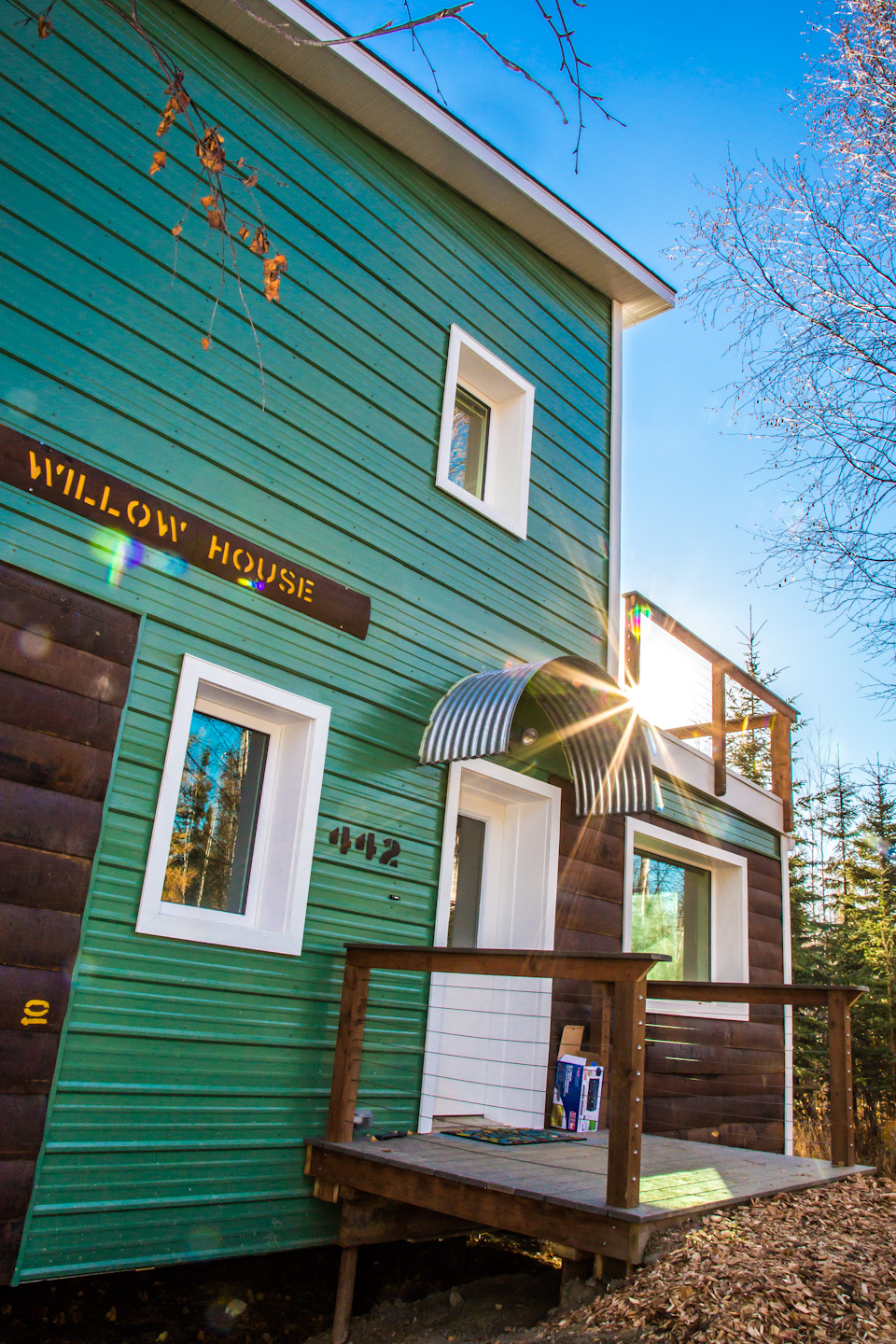Sustainable Village combines research, residence
October 12, 2012

Marmian Grimes
907-474-7902
10/12/12
The University of Alaska Fairbanks recently showed off its newest student housing complex.
The Sustainable Village is a community of four, four-bedroom homes built just south of campus near the Cold Climate Housing Research Center. Students were involved in both designing and building the village. In August, 16 students—sophomores through grad students—moved into the four homes.
In addition to providing a new option for student housing, the Sustainable Village is a laboratory for UAF and CCHRC researchers to study energy efficient design, alternative energy technology, cold climate housing and sustainable ways of living. The research work is central to the partnership between UAF and CCHRC.
UAF built the four 1,400-square-foot homes this summer. CCHRC served as the contractor on the project and helped ensure that the homes were designed for their research functions. Each has a unique combination of wall assembly, foundation and heating and ventilation system. For example, two homes are heated by solar thermal collectors with hydronic in-floor heating and two use a small diesel heater tied into the ventilation system. They employ different versions of the REMOTE wall—three with 8 inches of exterior rigid foam and one with a 12-inch standoff wall filled with cellulose. That means that each has an exterior envelope rating of about about R-60.

CCHRC researchers will monitor things like construction cost, energy consumption, electricity use, indoor air quality, and ground temperature to see the environmental impact and cost-benefit of different techniques.
UAF students came up with the concept for the homes through a design contest last fall. Many of their ideas—such as a spacious second-floor deck with large solar windows, thermal shutters, a shed-style roof, and a natural, vegetated site—were incorporated into the plans. About 10 students worked together with seasoned carpenters on the construction crew this summer. Student residents will help monitor fuel and electricity use, study various scientific and social aspects of the village, and collaborate with CCHRC researchers to improve the prototype.

The village reflects UAF’s commitment to sustainability and to nurturing student interest in sustainable development, research and hands-on learning. UAF may build on the village with a greenhouse, community center, and additional homes—using emerging technologies—over the next decade.


